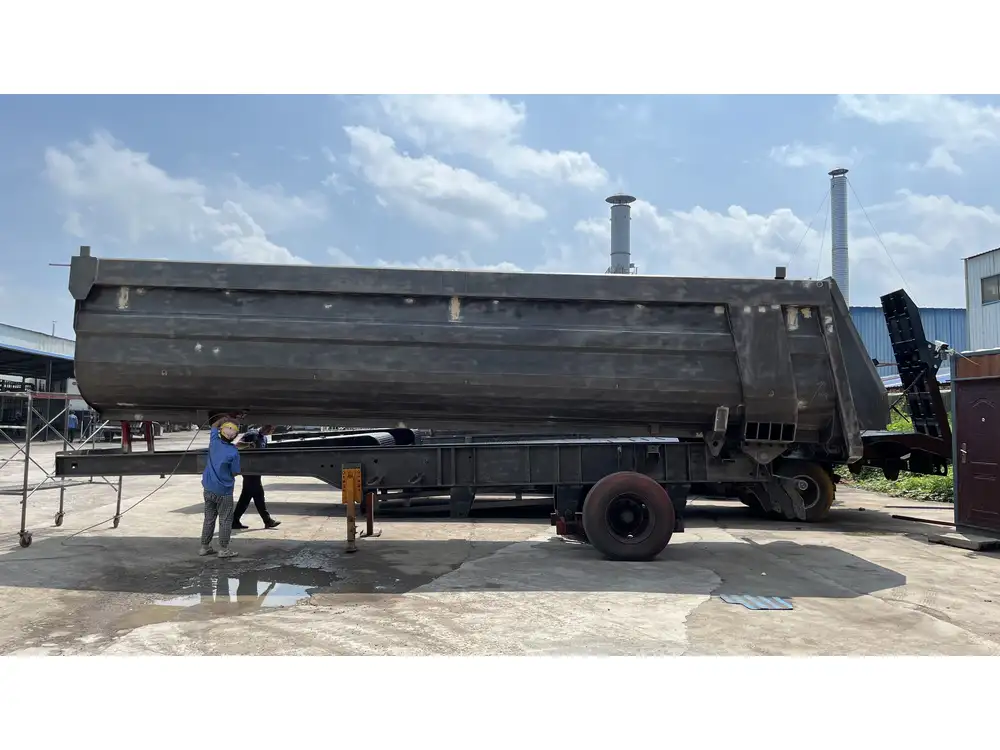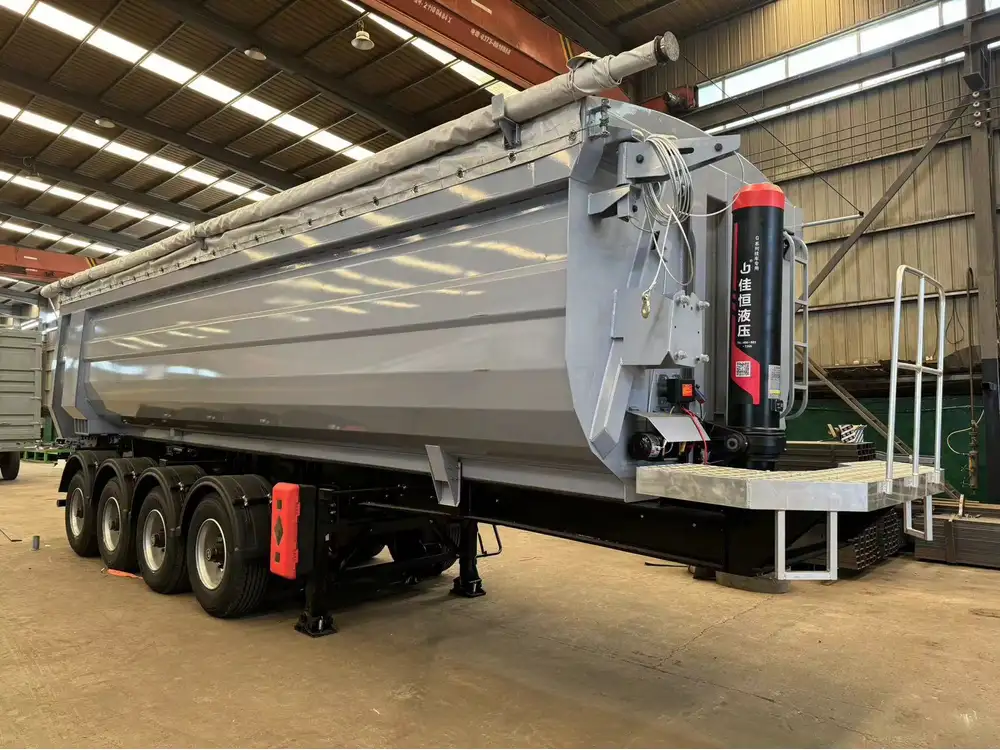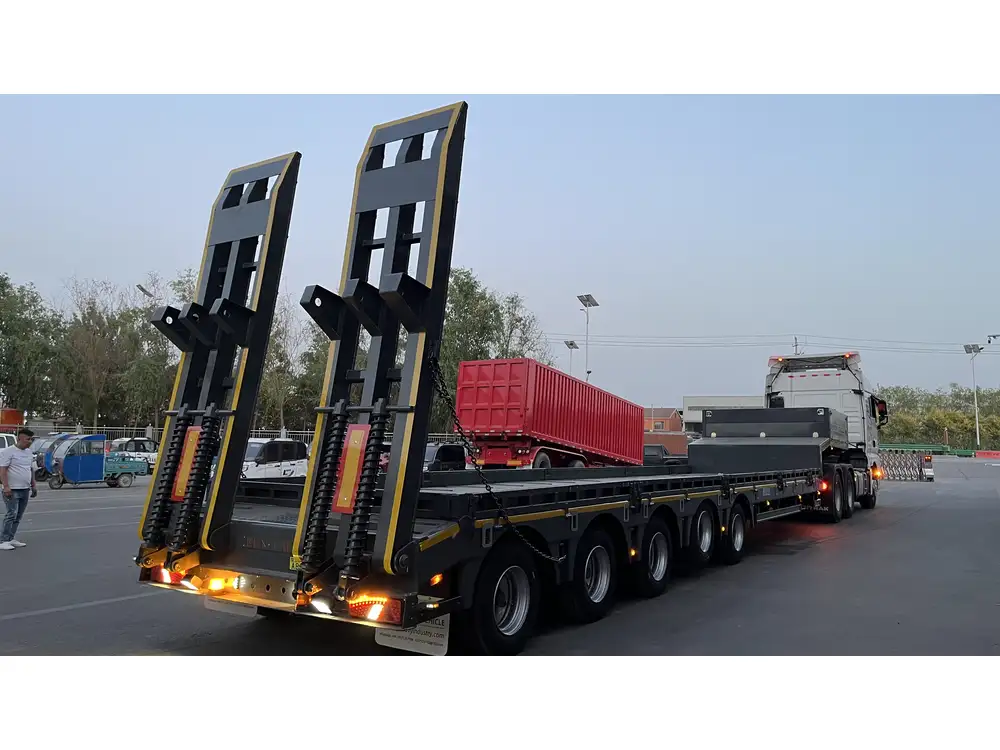When it comes to enhancing the capacity and functionality of a dump trailer, adding side extensions is a practical solution. This guide provides a succinct pathway to crafting effective side extensions, ensuring you not only meet but exceed your hauling needs.
Understanding the Purpose of Side Extensions
Before diving into the construction process, it’s essential to grasp the roles side extensions play for dump trailers:
- Increased Capacity: Side extensions effectively raise the height of the trailer’s sides, allowing for the transport of larger loads without spillage.
- Improved Versatility: By adjusting the trailer’s dimensions, you can adapt your trailer for different uses, from landscaping to construction.
- Safety and Compliance: Many regulations require specific load heights; side extensions help ensure compliance.
Materials Required for Construction
The selection of appropriate materials is crucial for durability and performance. Here’s a detailed list of materials you’ll need:
| Material | Description |
|---|---|
| Heavy-Duty Steel | Preferred for frame construction due to strength and corrosion resistance. |
| Angle Iron | Used for reinforcing corners and adding stability. |
| Plywood or Sheets | Ideal for the side panels; ensure they are thick enough to provide structural integrity. |
| Weld-On Hinge Sets | Necessary for attaching the panels securely yet flexibly. |
| Bolts and Nuts | Essential for securing all components together, especially if welding is not preferred. |
| Paint or Sealant | Needed to protect against rust and extending the lifespan of the extensions. |

Step-by-Step Construction Guide
Step 1: Measure Your Trailer
Begin by determining the dimensions of your dump trailer. Accurate measurements will facilitate efficient planning and execution.
- Measure the existing height and length of the trailer sides.
- Decide how high you intend to extend the sides – typically, an increase of 12 to 24 inches works well.
Step 2: Design the Side Extensions
With measurements in hand, sketch a design. This blueprint will guide the construction process.
Key Considerations:
- The design should include the dimensions of each side extension.
- Plan for a uniform approach; both sides should match in height and length to maintain balance.

Step 3: Cutting the Materials
Using your design as a reference, cut your heavy-duty steel and plywood or metal sheets accordingly.
- For steel, employ a plasma cutter or an angle grinder for precision.
- Ensure the cuts are straight and accurate to avoid complications during assembly.
Step 4: Assemble the Frame
Create the Frame:
- Using angle iron, construct a rectangular frame that matches the length of the extensions.
- Weld or bolt the corners, ensuring each joint is secure.
Attach the Side Panels:
- Attach the plywood or metal sheets to the frame using bolts or screws.
- Be sure to seal joints with a sealant to prevent moisture ingress.
Step 5: Install the Extensions
Hinge Mechanism:
- Install the weld-on hinge sets to allow the side extensions to fold down. This feature is essential for easy loading and unloading.
Secure the Extensions:
- Once the hinge is in place, lift the extensions to the upright position and secure them with bolts or pins to ensure stability during transport.

Step 6: Finishing Touches
Protection Against Corrosion:
- Apply a quality paint or sealant to all surfaces for protection against harsh weather and corrosion.
Final Inspection:
- Check all connections, ensuring everything is tidy and secured. Verify the stability and alignment of the extensions.
Safety Tips to Consider
When crafting side extensions for your dump trailer, safety should remain a top priority.
- Wear Protective Gear: Goggles, gloves, and appropriate clothing can help prevent accidents during construction.
- Follow Load Limits: Ensure that the total load including the extensions does not exceed the trailer’s rated capacity.
- Test Before Use: Conduct a test run with the extensions to ascertain stability and functionality before taking on heavy loads.
Additional Considerations

Compliance with Regulations
Always check local regulations concerning load height limits when using extensions. Ensuring that your trailer remains compliant can prevent legal hassles and potential fines.
Potential Customizations
Consider customizing your side extensions with features such as:
- Foldable Sections: For easier storage and transport when not in use.
- Integrated Tie-Down Points: For securing loads and ensuring safety during transit.
- Reflective Tape: For nighttime visibility.
Troubleshooting Common Issues
As with any construction project, you may encounter problems during or after installation. Here are some common issues and solutions:
| Issue | Solution |
|---|---|
| Extensions are too high | Reassess your design and cut panels to the desired height. |
| Side panels bending under loads | Reinforce with additional supports or thicker materials. |
| Hinge malfunction | Ensure correct installation; lubricate or replace faulty hinges. |
| Rust formation | Regular maintenance and application of protective coatings. |

Conclusion
Adding side extensions to a dump trailer can significantly enhance its utility and efficiency, enabling users to transport larger loads responsibly. By following this comprehensive guide—from materials selection to installation—your endeavor will yield a highly functional and durable addition to your trailer. Always prioritize safety and compliance, and enjoy the multiplied benefits of your upgraded dump trailer.



